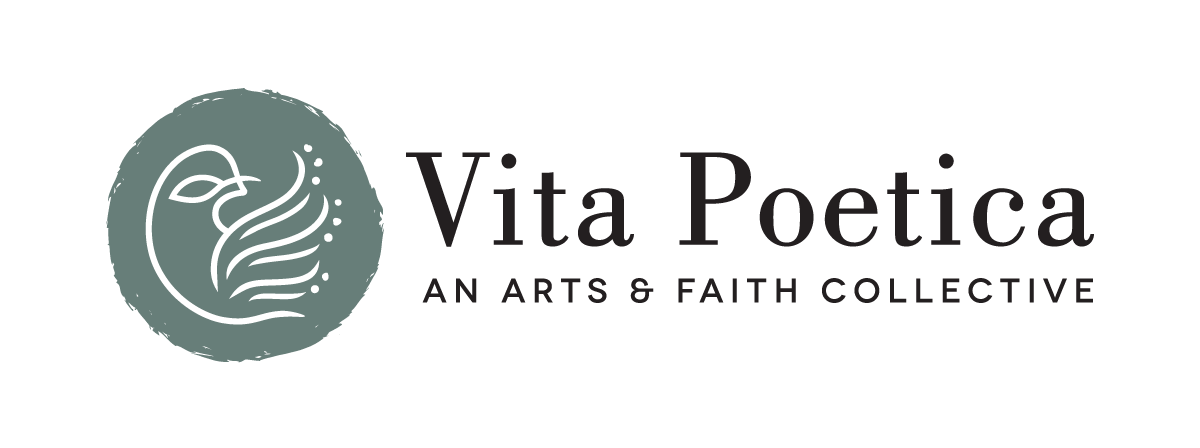Come Together
A Letter from Co-Editor Caroline Langston
I don’t have to tell you that these are times of fracturing. Culture, politics, media, faith—the subject of a thousand op-eds and conference panels and webinar discussions. The Instagram reels of film clips, yanked out of context like extracted teeth.
Today, the day that the latest Vita Poetica journal hits your inbox, it’s likely one or more of these problems is scratching at the back of your mind.
But we don’t need to go into any of it. Instead, this edition of Vita Poetica is an exaltation of—and a guide to—all the ways that we can come back together.
I’m writing this dispatch from a long-awaited family reunion on the Chesapeake Bay: all six children, spouses, a couple of our own children, and a few friends coming in and out. I pulled up the table of contents and there atop the screen, Caroline Greb’s painting Not in the Wind was an almost exact mirror of the scene right in front of me. It felt, in fact, like a kind of strange repetition, a re-meeting in which I couldn’t help but think of the lines from Four Quartets: “And the end of all our exploring/Will be to arrive where we started/And know the place for the first time.”
Re-union. Re-newal.
So many of the pieces in this volume speak to the opportunities we are handed to overcome the gulfs between us. There’s work involved: Richard Chess’s poem “The Loneliest Monk: By the Book” speaks of the necessity of laboring to understand the reading–and the perspective—of another. You must know
how to read, I mean
not to read but to erase
the words from the page
to uncover, reveal, or release . . .
Similarly, Tom Holmes’ “Medieval Mental Furniture: A Primer” places us in the realm of pre-Enlightenment mythos, and inspires us to climb into a new spiritual understanding, “ . . . beyond the image of this world/ where the Lord cradles us in his jaw.”
Perhaps the most striking instance of this drive toward unitive understanding lies in Luke Usry’s poem “Leave Britney Alone.” In it, the protagonist images the haunted pop star is nothing less than Christ Himself, a juxtaposition that’s both shocking and entirely justified. And the protagonist’s realization, his repentance
. . To know I washed my hands of both
Your humanity and mine. . .
reflects the same kenosis he can now see in Him, and her.
Similarly, Grace Donovan’s short story “Ave Maria” traces young protagonist Maeve’s arc from envy of her mean-girl nemesis in the parish Nativity play to radical compassion and understanding.
It is only through these essais, attempts, repeated over and over, that we can come to the authenticity of communion.
And the possibility for coming together is not only for humans: it’s also between humans and the natural world. In this season, in particular, we can learn from Kolya Braun-Greiner’s “Contemplation of Creation: A Nature Meditation Walk,” the latest installment in our Contemplative Practices series. There lives the dearest freshness deep down things, I remember—and in this fractured season, we need to make time for it.
Remember. Re-member. You don’t have to be a Christian to find infinite value in the notion that each of us is literally a “member” in a seamless Body.
But we must always be ready to search for the meaning of what we owe each other, together.
